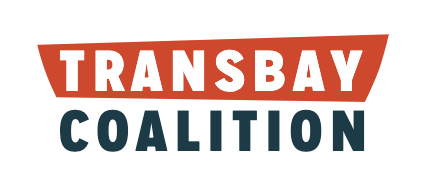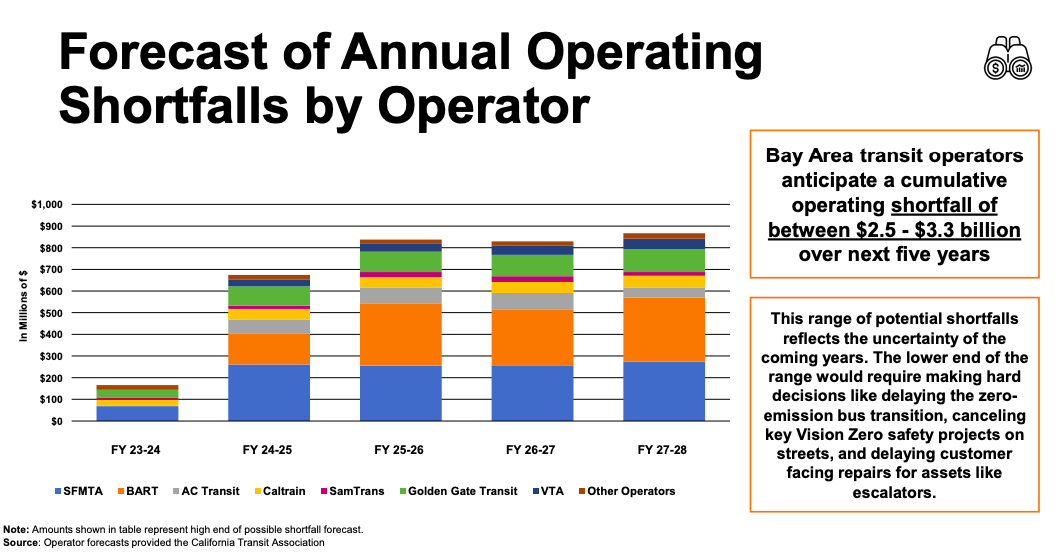The state legislature in Sacramento is looking into the challenges facing public transportation as the fiscal cliff facing agencies comes into sharper focus.
On Monday, February 27, a Joint Assembly/Senate Transportation Committee hearing will cover the impending public transportation fiscal cliff that is impacting 72% of transit agencies in California, and opportunities to regrow ridership and improve the system going forward. On March 9, the Senate Transportation budget subcommittee is discussing transit in the state budget. Senator Scott Wiener has convened a Senate select committee to examine the challenges facing Bay Area public transit and opportunities to adapt to new travel patterns and provide more rider-friendly service.
The legislature will consider new information from transit agencies and MTC that bring into sharper focus the crisis that is looming as federal relief funding runs out while ridership is slower to recover.
The Metropolitan Transportation Commission recently assembled information from Bay Area agencies showing a total revenue shortfall of around $3B over the next 5 years.
Agencies that provide regional service with budgets dependent on fares such as Caltrain, BART, and WETA (ferries) are among the hardest hit.
Caltrain’s news got slightly less dire at the end of January. Its fiscal cliff was deferred until around 2025, when the State of California provided the funding needed to complete electrification. If this funding hadn’t come through, Caltrain would be facing deficits and potential service cuts this year.
As reported at its board meeting on January 26, BART now expects its fiscal cliff to hit as soon as January 2025. According to MTC’s analysis, BART would only be able to provide 22% of pre-pandemic service hours in the scenario with slow ridership recovery. This could lead to drastic service cuts such as no weekend service, hourly service during the week, and shuttered stations.
The SFMTA expects its fiscal cliff to hit in FY25, with ridership around 55% of pre-pandemic levels with downtown office vacancy rates reported at 27% in 2022. Ridership patterns have changed, with downtown-serving routes seeing less ridership and some crosstown routes crowded.
SFMTA has a unique revenue mix with funding from the city budget and parking in addition to fares and other public funding. Its budget gap is driven by slow ridership regrowth and stagnant revenues from the city and parking.
AC Transit expects its fiscal cliff to hit in FY 2025, with deficits totaling 114M over 3 years.
While region-wide ridership has recovered roughly 55% of pre-pandemic ridership, across operators, ridership recovery ranges from 30% to 80%.
While the governor’s budget proposal contemplated cutting funds for public transportation, the legislature will be looking for solutions to retain, transform and improve transit.

